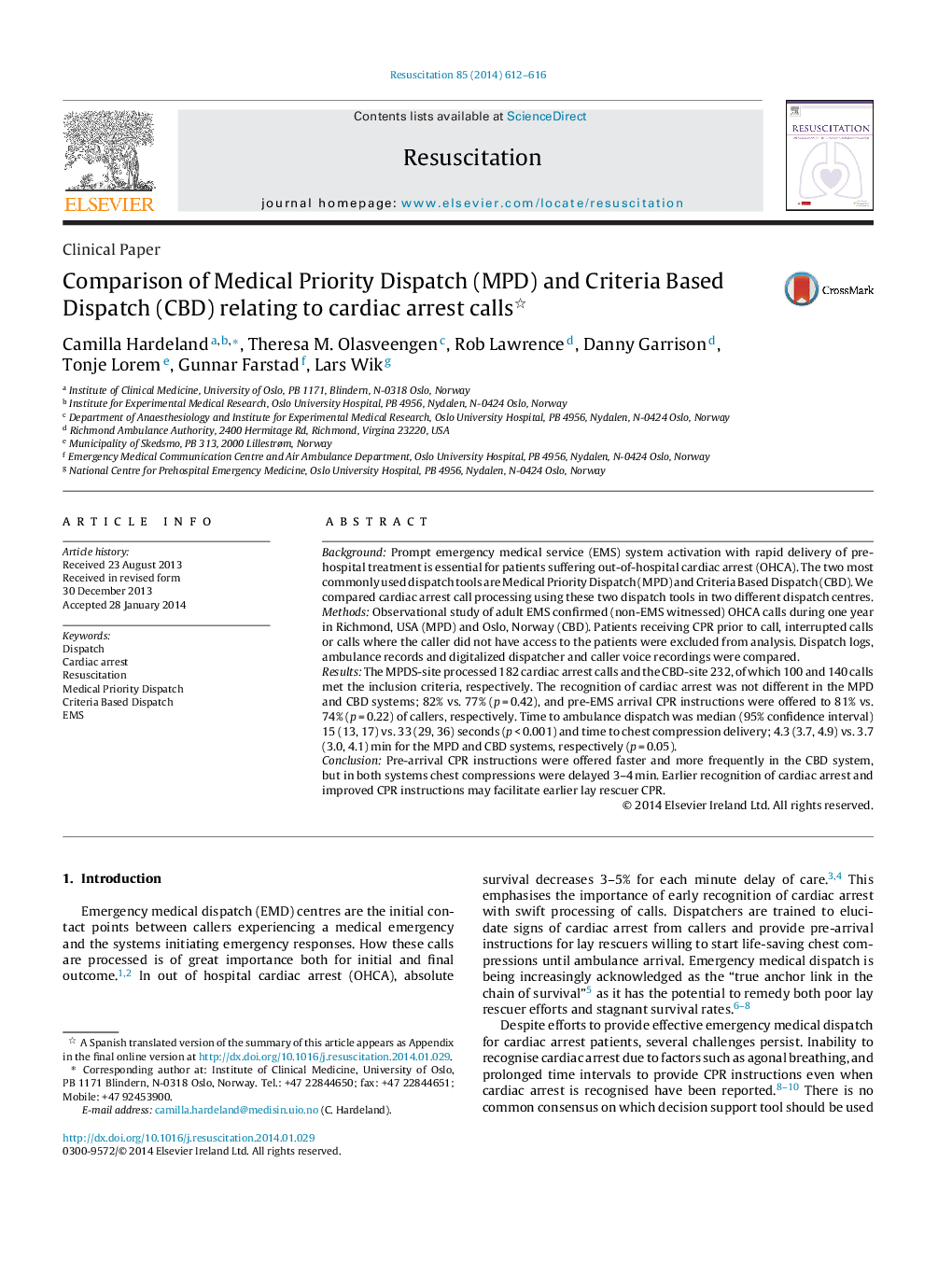| Article ID | Journal | Published Year | Pages | File Type |
|---|---|---|---|---|
| 5998397 | Resuscitation | 2014 | 5 Pages |
BackgroundPrompt emergency medical service (EMS) system activation with rapid delivery of pre-hospital treatment is essential for patients suffering out-of-hospital cardiac arrest (OHCA). The two most commonly used dispatch tools are Medical Priority Dispatch (MPD) and Criteria Based Dispatch (CBD). We compared cardiac arrest call processing using these two dispatch tools in two different dispatch centres.MethodsObservational study of adult EMS confirmed (non-EMS witnessed) OHCA calls during one year in Richmond, USA (MPD) and Oslo, Norway (CBD). Patients receiving CPR prior to call, interrupted calls or calls where the caller did not have access to the patients were excluded from analysis. Dispatch logs, ambulance records and digitalized dispatcher and caller voice recordings were compared.ResultsThe MPDS-site processed 182 cardiac arrest calls and the CBD-site 232, of which 100 and 140 calls met the inclusion criteria, respectively. The recognition of cardiac arrest was not different in the MPD and CBD systems; 82% vs. 77% (p = 0.42), and pre-EMS arrival CPR instructions were offered to 81% vs. 74% (p = 0.22) of callers, respectively. Time to ambulance dispatch was median (95% confidence interval) 15 (13, 17) vs. 33 (29, 36) seconds (p < 0.001) and time to chest compression delivery; 4.3 (3.7, 4.9) vs. 3.7 (3.0, 4.1) min for the MPD and CBD systems, respectively (p = 0.05).ConclusionPre-arrival CPR instructions were offered faster and more frequently in the CBD system, but in both systems chest compressions were delayed 3-4 min. Earlier recognition of cardiac arrest and improved CPR instructions may facilitate earlier lay rescuer CPR.
